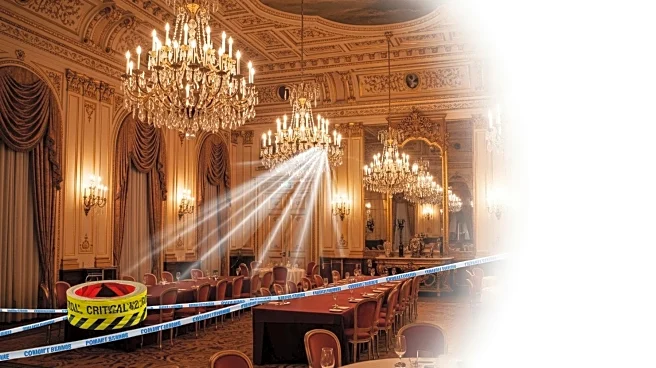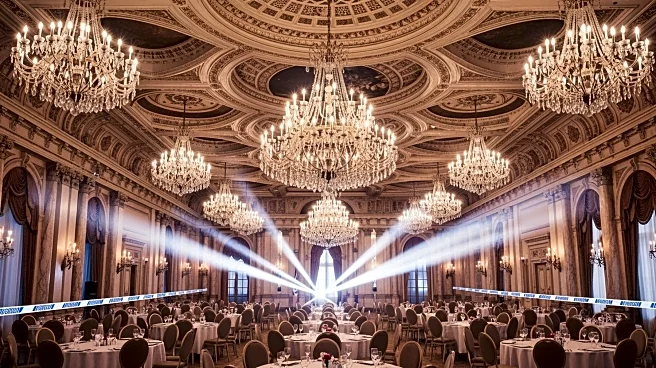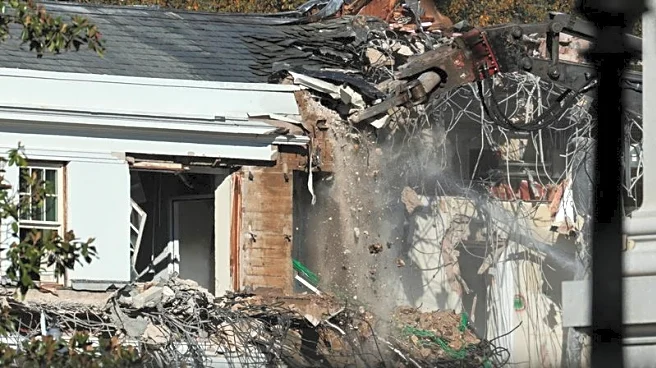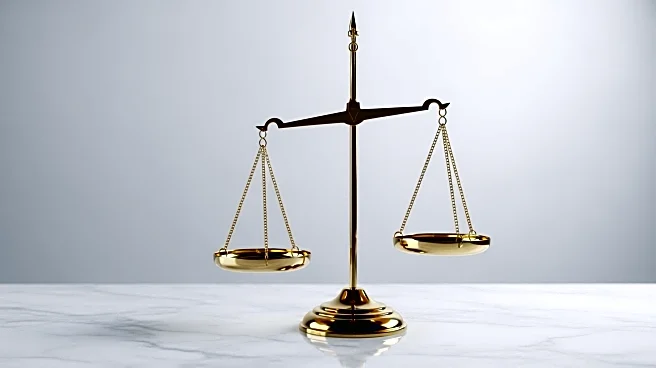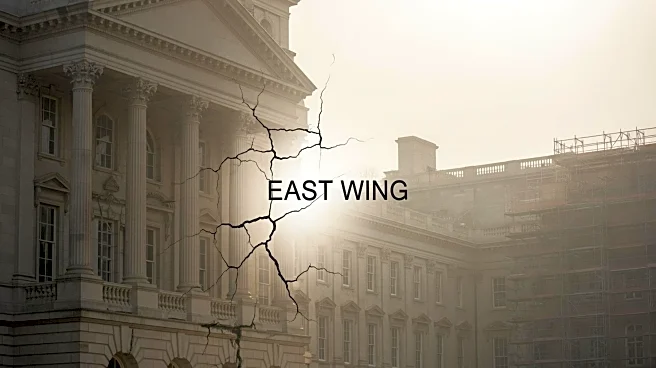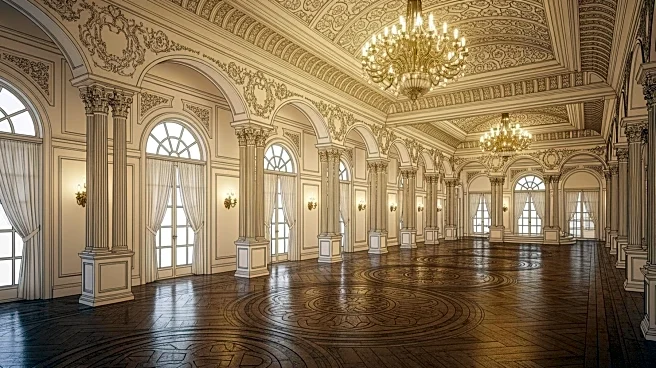What's Happening?
A new $300 million ballroom is being constructed at the White House, funded by a combination of billionaire donors and major corporations. The 90,000-square-foot structure will be located at the north
end of the East Wing. Companies such as Amazon, Apple, Microsoft, Google, and Meta, along with crypto-businesses like Coinbase and Gemini, are among the contributors. GOP megadonors, including the Winklevoss twins and Miriam Adelson, have also contributed to the project. President Trump envisions the ballroom as a venue for state dinners and major events, reflecting the opulence of his Mar-a-Lago club. The project is privately funded, ensuring no taxpayer burden.
Why It's Important?
The construction of the ballroom represents a significant private investment in a public institution, highlighting the influence of corporate and private donors in government projects. This development raises questions about the role of private funding in public spaces and the potential implications for government transparency and accountability. The ballroom is expected to enhance the White House's capacity to host large-scale events, potentially increasing its role in diplomatic and political functions. However, the reliance on private funding may lead to concerns about donor influence and the prioritization of private interests in public projects.
Beyond the Headlines
The ballroom project may set a precedent for future private funding of public infrastructure, potentially altering the landscape of government financing. The involvement of major tech companies and crypto-businesses could signal a growing trend of corporate influence in government affairs. This development may also spark discussions about the ethical considerations of private contributions to public institutions, particularly regarding transparency and accountability. The project could influence future policies on public-private partnerships and the role of private funding in government projects.
